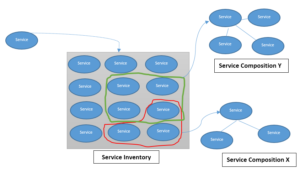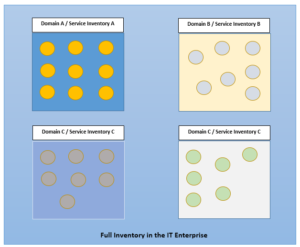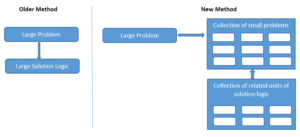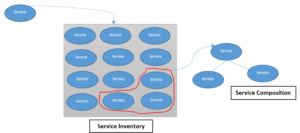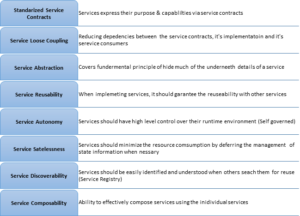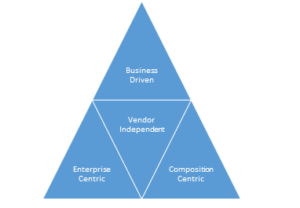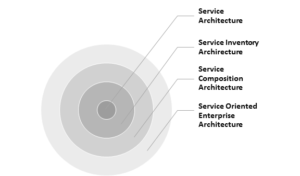In the previous posts we looked in to the basic concepts of SOA. Thought of moving to a new term in the technology world called Microservices Architecture. Actually the term is the only thing which is new to SOA world. The concepts behind the microservices architecture came with SOA. However if you’re not familiar with SOA and compare the microservices architecture with Monolithic applications development then this would be a new concept for you. Assuming you have the knowledge in SOA, we will justify the above argument which is Microservices Architecture is a sub set of SOA.
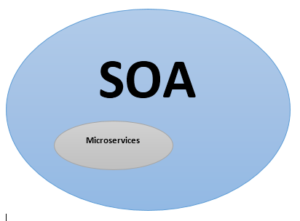
What is Microservices Architecture?
Microservices architectural style is an approach of developing a single application as a suite of small services, each running in its own process and communicating with lightweight mechanisms, often an HTTP resource API. These services are built around business capabilities and independently deployable by fully automated deployment machinery. There is a bare minimum of centralized management of these services, which may be written in different programming languages and use different data storage technologies. – “Martin, Fowler”
Let us concentrate on the definition of microservices architecture and discuss about each special characteristics.
The concept “small services which build around business capabilities”, is a concept we discussed under SOA. Which is Agnostic Logic and Entity Service concept in SOA. Those services are reusable, also concentrate on single small business problem.
The statement “Developing single application as a suite of small services” is yet another well establish concept in SOA known as “Service Composition”. There we have a Service Inventory which is a collection of reusable small services which will help to compose large services / applications.
The newly introduce concept on microservices architecture when compare to SOA is; microservices is individually deployable services which make them very easy to apply continuous integration and deployment. Where in SOA we deploy our services in shared resources. Microservices architecture is more driven by DevOps practices. Mostly deployed in cloud infrastructure, each service has the capability to auto scaling in built. With the immerging container technologies like Docker and surrounding technologies like Mesos and Kubernates will ensure the deploying micro services will be more unwind than ever. This concept will maximize the decoupling of logic and in addition the platform they are deployed. In the long run microservices architecture will minimize the change management cost compare to traditional SOA.
However if you have properly deign and implemented your SOA solution then you should be able to easily deploy your services independently in Tomcat / Nginx application servers across the nodes in your cluster too. Which will cover the key feature in micro services architecture.
In SOA, ESB and BPEL orchestration software plays a major role in building communication structures between different systems enterprise applications. Let’s see how microservices architecture replaces those tools.
ESB / BPEL Tools vs Smart Endpoints and dump pipes
Enterprise Service Bus (ESB) main capabilities are message routing, choreography, transformation, and applying business rules. In the microservices architecture ESB capabilities are covered through smart end points and dump pipes. REST protocol with different end points (smart endpoints) which has appropriate logic behind it will ensure the covering of ESB and BPEL orchestration capabilities we see in SOA. Application of a lightweight message bus act as the dump pipes in microservices architecture. It can be simply implemented using tools like RabbitMQ. The key added feature from dump pipes is reliable asynchronous messaging between services which is also common in SOA.
Below diagram illustrate the how microservices architecture differentiate from SOA.
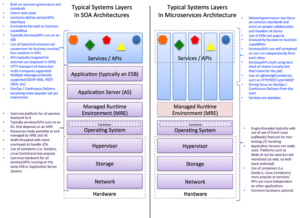
Conclusion
So we can clearly see microservices architecture does not have much difference compare to SOA other than the deployment platform. Further as many articles express; “Microservices architecture is a design pattern of SOA” and Microservices architecture is a new term introduced to latch a new look to very old concept called SOA.
References
- Buliding Microservices by by Sam Newman
- http://www.soa4u.co.uk/2015/04/a-word-about-microservice-architectures.html
- http://stackoverflow.com/questions/25501098/difference-between-microservices-architecture-and-soa
- https://martinfowler.com/articles/microservices.html
- http://stackoverflow.com/questions/25501098/difference-between-microservices-architecture-and-soa
- http://www.tatvasoft.com/blog/the-difference-between-micro-services-and-web-services/
